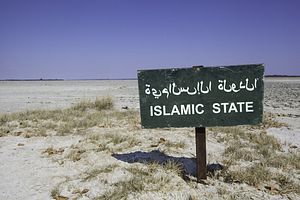Recently, Reuters published an article that quoted the Pakistani Taliban’s (TTP) leadership as claiming that a former spokesperson, Shahidullah Shahid (pen name for Sheikh Maqbool), had pledged the TTP’s allegiance to the Islamic State of Iraq and Syria (ISIS) in “… a move to seek publicity.” And that, “[a]s far as allegiance to ISIS (Islamic State) is concerned, … [their] allegiance is to Mullah Mohammad Omar Mujahid” – the Afghan Taliban leader. The article goes on to discuss years of tension and resulting fractions within the TTP, but the key takeaway is that some terrorists weigh popularity over loyalty. These bandwagoning terrorists base their allegiance and support on media darlings, more so than on any actual rapport with their new alliance. And while the TTP may not profess an allegiance to ISIS, its affiliates certainly do, along with the once “loyal” affiliates of al-Qaeda and its Syrian affiliate, the Al-Nusrah Front. Although the ideology itself may motivate terrorist relations, there is something to be said about developing alliances that appear to be driven solely by media attention and publicity.
Within one month of ISIS taking control of Mosul and announcing its caliphate (June 19, 2014 and June 29, 2014, respectively), the following Asian terrorist groups publicly announced their allegiance to ISIS: Mujahidin Indonesia Timur, Tahreek-e-Khilafat (the Caliphate Movement), Jamaah Ansharut Tauhid, and Abu Sayyaf. The aforementioned groups spanned from Pakistan and Indonesia to the Philippines. They claimed allegiance either because of ISIS’s takeover of Mosul or its announcement of a global caliphate. Yet, none of these groups claimed any support for ISIS before such events gained media attention.
After the James Foley (August 19, 2014), Steven Sotloff (September 2, 2014), David Haines (September 13, 2014), and Alan Henning (October 3, 2014) videos were released and circulated, additional Asian terrorist groups flocked to join the ranks of ISIS. Bangsamoro Islamic Freedom Fighters, Ansar-ul-Tawhid Fi Bilad Al Hind, and the Islamic Movement of Uzbekistan, pledged their allegiance and/or support to a group they had not publicly supported beforehand. The IMU in particular had consistently worked alongside al-Qaeda, even recently positioning itself in northern Afghanistan on the border with Tajikistan to expand their support. Unfortunately for al-Qaeda loyalty isn’t what it used to be, because as soon as ISIS had enough momentum in the media, al-Qaeda’s once loyal supporters were aligning with the new “it” group.
The influence ISIS is having on the Asian jihadist movement is daunting. Government officials throughout Central Asia have increasingly noted their concern with Central Asian militants traveling to Syria and returning home to promote their own caliphate. With many groups defecting from al-Qaeda, ground support for ISIS is also increasing in South Asia. In recent days, pictures have surfaced from Kashmir that show ISIS flags being flown as well as spray-painted ISIS logos. In another example, Harkatul Jihad Al Islami, a Bangladeshi group that had four militants recently arrested, was attempting to join ISIS with the Bangladeshi Jamaat-e-Islami party being the main operative. Although Indian officials have articulated their concern with rising al-Qaeda cells, there appears to be more ground support for ISIS (with one jihadist website showing a picture of 24 Muslim men in India wearing ISIS t-shirts).
The release of ISIS videos around the world has resulted in millions of viewers being introduced to a group they probably never heard of before 2014. The once unknown group continues to garner tremendous notoriety along with increasing terrorist support. Such support is publicly stated with strategic timing to exploit the most media attention possible. Arguably, all of the aforementioned terrorist groups were compelled to support ISIS after it began trending on Twitter and Facebook and making international headlines. Some groups even followed their statements with copycat beheadings and bombings.
While today’s terrorists may appear to be focused on a hardened ideology, their lack of loyalty is impressive. Such events highlight how quickly loyalty can be discarded for mere access to television notoriety and increasing popularity. Do terrorists perceive a correlation between power and media attention? Maybe. But what we do know is that once ISIS is replaced by a new media darling, other groups will be sure to jump on the bandwagon.
Liana Eustacia Reyes, MA, JD is a graduate student at New York University’s Department of Politics and research coordinator for IBI Consultants, LLC. She specializes in U.S. national security and transnational threats focusing on Central Asia and Latin America. Elizabeth Bennett is a graduate student at New York University’s Department of International Relations. She specializes in U.S. national security and terrorism focusing on South Asia.
































